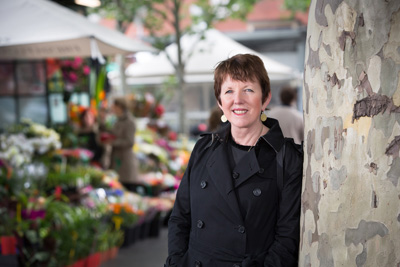

In the annals of public health, few stories so clearly illustrate the link between city design and health as the tale of the Broad Street pump in 19th century London.
At the time, physician John Snow believed that contaminated water from sewerage caused cholera, even though most of his peers believed that ‘bad air’ was the culprit.
By mapping cholera cases in an 1854 epidemic, Snow traced the source to a water pump in Broad Street. When the handle of the pump was removed, cases of cholera quickly waned. It was discovered later that the pump drew its water downstream of a sewage outlet into the Thames River.
Snow’s simple discovery was among the first evidence of the role of clean water and sanitation in preventing epidemics of intestinal diseases such as cholera.
Fast forward 160 years, and Melbourne researcher Professor Billie Giles-Corti is focusing on city design and human health, this time with the aim of preventing the epidemic of the 21st Century – chronic disease.
Professor Giles-Corti, from the University of Melbourne, and her team are working on a project with the Australian Prevention Partnership Centre that is developing ways to measure the key factors that make our cities ‘liveable’.
Systematic research
While liveable communities – such as those with walkable neighbourhoods, good public transport, public open space and social infrastructure – have become a priority for urban planners, there has been little systematic research into the impact of this design on health.
“We now wouldn’t dream of building a community without sanitation and water, and we hope this research will show the other essential elements that make a community work from a health perspective.”
In earlier work, Professor Giles-Corti’s team identified 11 domains of liveability that are likely to contribute to health and wellbeing: crime and safety; education; employment and income; health and social services; housing; leisure and culture; local food and other goods; natural environment; public open space; transport; and social cohesion and local democracy.
National indicators
Professor Giles-Corti is leading a national team that includes researchers from University of Melbourne, University of Western Australia, Queensland University of Technology, University of Western Sydney and the University of Canberra. Building on their work for communities in Victoria, Queensland and WA, the Partnership Centre project will develop national indicators to provide policy makers with evidence for how much each of these domains affects liveability.
For example, what is the optimal amount of green space in an urban community for good health?
The researchers are using geographical information systems (GIS) to do their analysis.
“With GIS, we’re able to link everything to location, so we can build a map that shows all the parks and greenery, and a map that shows public transport, and another that shows housing density,” Professor Giles-Corti said.
“We will layer all these maps together and link this information to health outcomes of people living in each location.”
Professor Giles-Corti believes the national indicators for liveable and healthy urban communities will likely differ for inner-city, suburban and outer-city locations.
“In inner Melbourne, there is a lot of high-rise development for disadvantaged people and I wonder if they do better than equally disadvantaged people living in the outskirts of Melbourne,” she said. “Or maybe they generate different problems, and there might be different answers to meet the different areas. We want to understand these differences.”

Tools for policy makers and researchers
The final stage of the project will aim to develop and maintain a national built-environment database from which liveability indicators could be applied to studies of population health.
“This would be a tool for policy makers, practitioners and researchers,” Professor Giles-Corti said. “They could download data about the built environment in areas of interest or create maps. That’s the legacy we hope this project could leave.”
A central principle of the project, and of all Partnership Centre projects, is that the researchers work closely with policy makers and non-government organisations, such as the Heart Foundation and the Planning Institute of Australia and national and state government departments responsible for planning and transport, to set priorities and plans for implementation.
“As researchers, we can’t change the built environment,” Professor Billie Giles-Corti said. “We must work with the policy makers and practitioners responsible for creating the built environment, and provide them with the evidence about optimal city design to create good health.”
By Marge Overs, Communications Manager, The Australian Prevention Partnership Centre
Find out more
- Read about the work of The Australian Prevention Partnership Centre
